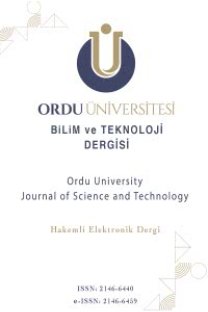Cytotoxic activities on selected Lamiaceae Species from Turkey by brine shrimp lethality bioassay
In this study, an experiment for cytotoxic activity was carried out on the methanol and water extracts of three species belonging to the Lamiaceae family (Thymus zygioides Griseb, Teucrium sandrasicum, Origanum sipyleum) collected from Turkey. A brine shrimp (Artemia salina L.) lethality test was established for the present study and the cytotoxicity was reported in terms of 50 % lethal concentration (LC50). The LC50 values of the extracts were calculated using an EPA Probit Analysis Program (version 1.5). The A. salina were hatched and the active shrimps were collected for use in the assay. Ten A. salina were added to different concentrations of the extracts, the surviving shrimps were counted after a period of 24 h and the lethality concentration LC50 was assessed. The water and methanol extracts of these plants showed cytotoxicity against brine shrimp. The cytotoxic activities of the extracts ranged from 34.66-643.652 µg/mL. The strongest cytotoxic activity were obtained from the methanol extract of T. zygioides. This significant lethality of the extracts from three species could be the source of potential cytotoxic components in these species but this will require further investigation.
Anahtar Kelimeler:
Artemia salina, cytotoxic, Origanum sipyleum, Thymus zygioides
___
- 1. Al-Dabbas M M (2017). Antioxdant activity of different extracts from the aerial part of Moringa peregrina (Forssk.) Fiori, from Jordan. Pakistan Journal of Pharmaceutical Science 30 (6): 2151-2157
- 2. Nickavar B & Esbati N (2012). Evaluation of the antioxidant capacity and phenolic content of three Thymus species. Journal of Acupuncture and Meridian Studies 5(3):119-125
- 3. Harley R M, Atkins S, Budanstev A L, Cantino P D, Conn B J, Grayer R, Harley M M, De Kok R, Krestovskaja T, Morales R, Paton A J, Ryding O & Upson T (2004). Labiatae. In; Kadereit JW. (Ed). The Families and Genera of Vascular Plants, Lamiales, vol. VII. Springer, Berlin, 167-282
- 4. Sivropoulou A, Papanikolau E, Nikolau C, Kokkini S, Lanaras T & Arseniakis M (1996). Antimicrobial and Cytotoxic Activities of Origanum Essential Oils. Journal of Agricultural and Food Chemistry 44 (5):1202-1205
- 5. Gharaibeh M N, Elayan H H & Salhab A S (1989). Anorexic effect of Teucrium polium in rats. International Journal of Crude Drug Research 27: 201-210
- 6. Kaska A, Çiçek M, Deniz N & Mammadov R (2018). Investigation of phenolic content, antioxidant capacities, anthelmintic and cytotoxic activities of Thymus zygioides Griseb. Journal of Pharmaceutical Research International 21(1): 1-13
- 7. Kanwar A S (2007). Brine shrimp (Artemia salina)- a marine animal for simple and rapid biological assays. Journal of Chinese Clinical Medicine 2(4): 236-240
- 8. Svoboda K P & Hampson J B (1999). Bioactivity of essential oils of selected temperate aromatic plants: Antibacterial, Antioxidant, Anti-Inflammatory and other related pharmacological activities. Plant Biology Department, SAC Auchincruive, Ayr, Scotland, UK., KA6 5HW
- 9. Meyer B N, Ferrigni N R, Putnam J E, Jacobsen L B, Nichols D E & McLaughlin J L (1982). Brine Shrimp: A convenient general bioassay for active plant constituents. Planta Medica 45, 31-34
- 10. McLaughlin J L, Chang C J & Smith D L (1991). Bench-top bioassays for the discovery of bioactive natural products: an update. In:Rhaman AU. (Ed). Studies in Natural Products Chemistry, Elsevier 383-409
- 11. Adoum O A, Dabo N T & Fatobe M O (1997). Bioactivities of some savanna plants in the brine shrimp lethality test and in vitro antimicrobial assay. International Journal of Pharmacognosy 35: 334-337
- 12. Mayorga P, Perz K R, Cruz S M & Caceres A (2010). Comparison of bioassays using the anostracan crustaceans. Artemiz salina and Thamnocephalus platyurus for plant extract toxicity screening. Revista Brasileira de Farmacognosia 20(6): 897-903
- 13. Hossain A M, Ferdous T, Salehuddin S M & Das A K (2009). In vitro cytotoxicity (LC50) of extracts obtained from the seeds of Zea mays. Asian Journal of Food and Agro-Industry 2(3): 336-334
- 14. Ozkan G, Sağdıç O, Ekici L, Öztürk I & Özcan M M (2007). Phenolic compounds of Origanum sipyleum L. extract, and its antioxidant and antibacterial activities. Journal of Food Lipids 14: 157-169
- 15. Canadanovic-Brunet M J, Dilas M S, Cetkovic S G, Tumbas T V, Mandic I A & Canadanovic M V (2006). Antioxidant activities of different Teucrium montanum L. extracts. International Journal of Food Science and Technology 41: 667-673
- 16. Nakipoglu M, Ozturk Urek R, Ayar Kayali H & Tarhan L (2007). Antioxidant capacities of endemic Sideritis sipylea and Origanum sipyleum from Turkey. Food Chemistry 104: 630-635
- 17. Sargın S A, Akcicek E & Selvi S (2013). An ethnobotanical study of medicinal plants used by the local people of Alaşehir (Manisa) in Turkey. Journal of Ethnopharmacology 150: 860-874
- 18. Aksoy-Sagirli P, Ozsoy N, Ecevit-Genc G & Melikoglu G (2015). In vitro antioxidant activity, cyclooxygenase-2, thioredoxin reductase inhibition and DNA protection properties of Teucrium sandrasicum L. Industrial Crops and Products 74:545-550
- 19. Rehman N U, Al-Sahai J M S, Hussain H, Khan A L, Gilani S A, Abbas G, Hussain J, Sabahi J N & Al-Harrasi A (2016). Phytochemical and pharmacological investigation of Teucrium muscatense. International Journal of Phytomedicine 8: 567-579
- ISSN: 2146-6440
- Yayın Aralığı: Yılda 2 Sayı
- Başlangıç: 2011
- Yayıncı: ORDU ÜNİVERSİTESİ
Sayıdaki Diğer Makaleler
Aydın İl Merkezinde Faaliyet Gösteren Aktarların Kişisel ve Mesleki Özelliklerinin Belirlenmesi
Tülay ÇELİK, Muhyettin ŞENTÜRK, Özlem Sultan ASLANTÜRK
Nanoteknolojinin İnsan Sağlığına Faydalı ve Zararlı Yönleri
Ceyhan TARAKÇIOĞLU, Zafer BEKTAŞ
On The Cubic Bezier Curves In E^3
Şeyda KILIÇOĞLU, Süleyman ŞENYURT
Cytotoxic activities on selected Lamiaceae Species from Turkey by brine shrimp lethality bioassay
